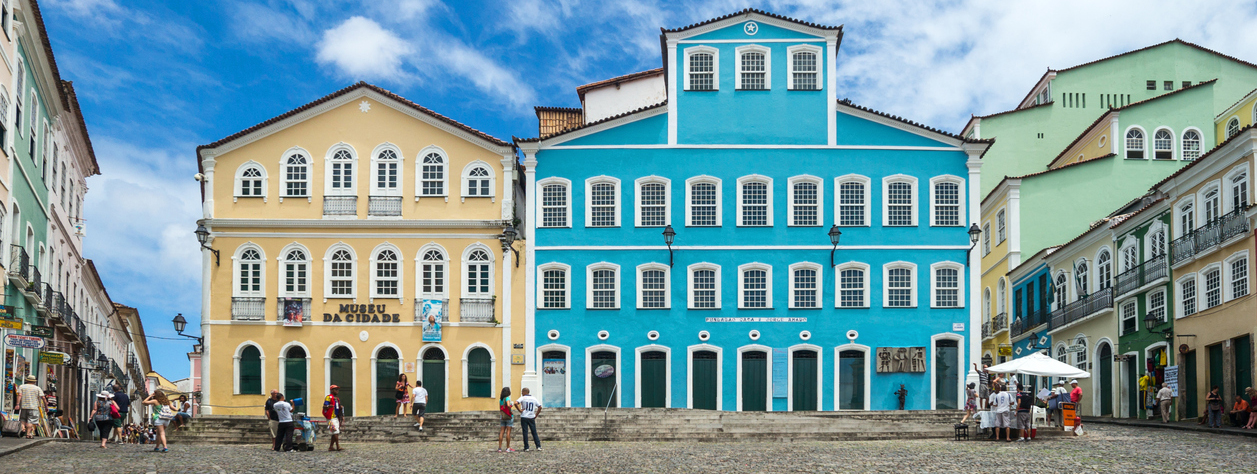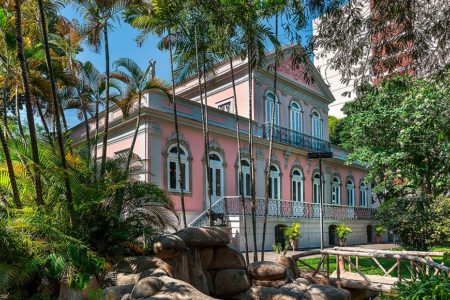
A Casa de Ruy Barbosa:
It is an entity located in Salvador, and linked to the Bahiana Press Association (ABI). The building was the house where the man from Bahia, Ruy Barbosa, lived until he was 16 years old (from 1849 to 1865). Located on the street that today bears his name, in the Historic Center of Salvador, it maintains a museum dedicated to the jurist’s memory, containing his personal objects and publications
Rua Ruy Barbosa, 12 – Centro, Salvador – BA, 40020-070
Phone: (71) 3321-4477
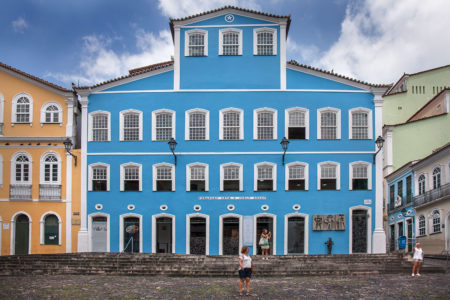
A Fundação Casa de Jorge Amado
It occupies the mansion facing the Largo do Pelourinho, in Salvador, Bahia. It is a cultural institution with various activities and a research center, with documentation on Jorge Amado himself, Zélia Gattai and Bahian literature, open to visitors and highlighting courses, seminars, workshops, conference cycles, lectures, book launches and records, exhibitions, focusing on literary, artistic and human sciences themes.
Largo do Pelourinho, 15 – Pelourinho, Salvador – BA, 40026-280
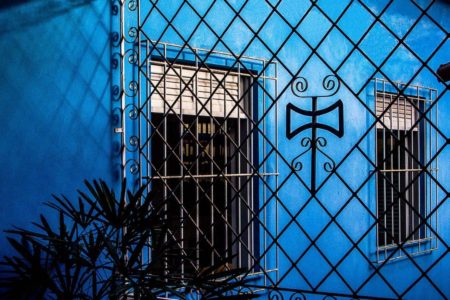
Fundação Pierre Verger (FPV)
it is a Brazilian museum. The foundation was created by Pierre Verger in 1988, in the city of Salvador, and operates in the same house in which Pierre Verger lived for years.
As founder, maintainer and president, he has donated to the foundation his entire personal collection, gathered from decades of travel and research. There are dozens of articles, books, 62,000 photographic negatives, sound recordings, films on film and video, as well as a precious collection of documents, files, correspondence, manuscripts and objects
Vila América, 6 – 2ª – Engenho Velho de Brotas, Salvador – BA, 40243-340
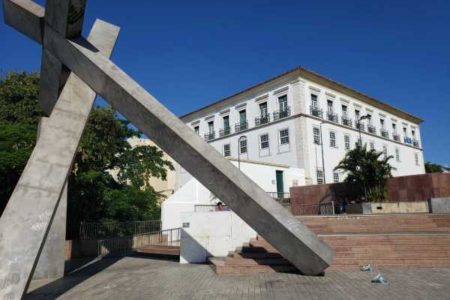
Centro Cultural Palácio da Sé
The Archiepiscopal Palace of Salvador, also known as the Archbishop’s Palace of Salvador, the Archiepiscopal Palace of the Cathedral and the Palace of the Cathedral, are located at Praça da Sé, in the Historic Center of Salvador.
It was built at the beginning of the 18th century to be the residence of archbishops (opened in 1715). It is one of the examples of architecture from the colonial period in the city, having a basement and three floors above the street. Its entrance is marked by a baroque pediment and a limestone portal decorated with the coat of arms of Dom Sebastião Monteiro da Vide, Archbishop of Salvador (1701-1722) at the time of the building’s construction. The architectural influence of Italian Renaissance palaces can be seen in its interior, with two superimposed galleries that open onto a central courtyard. The windows on the first two floors are of sill and straight lintels and the noble floor, the highest, has windows with balconies and iron railings. The interior is organized around a central courtyard.
The building was connected to the old Sé Church by elevated walkways. In 1933, the church was demolished to allow for the expansion of the tram tracks of the Companhia Linhas Circular de Carris da Bahia. Currently, the space of the former church is occupied by Praça da Sé, where, in 1999, the monument da Cruz Caída, by the artist Mário Cravo, was erected, in honor of the demolished temple.
The adaptation of the use of the property is intended to establish a center of reference in the history of the Catholic Church in Brazil, exhibiting the uniquely important collection of the Archdiocese of Salvador.
Opening hours: Tue to Sat – 10 am to 2 pm
Taxa de visitação: 5,00
Endereço: Praça da Sé, 203-47 – Centro Histórico, Salvador – BA, 40020-210
Phone: (71) 3838-9987
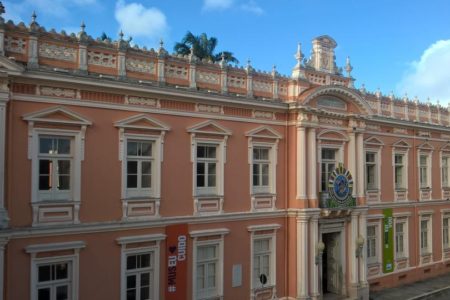
Memorial da Medicina Brasileira
It is a commemorative monument that keeps part of the history of Brazilian medicine, located in Praça XV de Novembro, in the Old School of Medicine, founded in 1982
Its collection contains more than 5,300,000 pages of documents including theses, applications for enrollment, research and experiences of generations of scientists, rare books from the 14th to 19th centuries, including the very expensive complete collection of Flora Brasiiliensis by Martius, some in Latin , others dealing with alchemy, the pinacoteca with more than 200 portraits of masters painted by famous Bahian artists and the furniture that is mainly in the Salão Nobre and in the Congregation.
Praça XV de Novembro, s/n, Largo do
Terreiro de Jesus, Pelourinho
Horário de Funcionamento Segunda-feira à Sexta-feira 8h às 17h
http://www.bgm.fameb.ufba.br/sites/bgm.fameb.ufba.br/files/folder_mmb_1.pdf
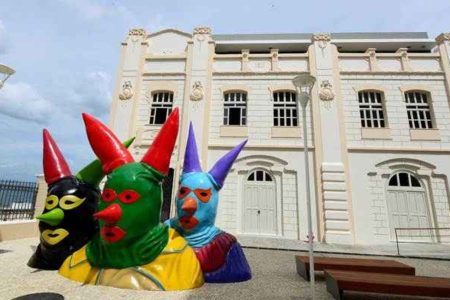
Museu do Carnaval
Located in the historic center of the city, next to the Cathedral Basilica, Casa do Carnaval tells the story of revelry in a visual and sensorial journey, with several thematic sections of the party that is at the heart of popular culture, social transformations and the formation of Bahian identity.
The great differential of the house is the interactivity, delivered to visitors through various multimedia resources.
In the first compartment on the ground floor of the building, visitors can find a library of books related to Carnival, Salvador and its arts and traditions. In addition, 200 dolls made of ceramics that represent typical figures of the revelry.
Also on the first floor, the Room of Creativity and Rhythms of the Bahia Carnival, which holds up to 40 people, details the diversity present in the Bahian carnival. With lights, reflectors and LED strips, the space’s proposal is to refer to the vibrancy of the party. With the sound of typical revelry music playing, the visitor has access to several showcases with unpublished objects provided by artists, which show old and current decorations, important during Carnival festivities. The interactive space brings together the memory of the party in Bahia in material archives, props, sculptures, videos and audios.
On the first floor, in the interactive cinema, the visitor chooses the film he wants to see, with 10 minutes each and others to take photos with the props available for characterization. Here, the visitor gets to know the history of the rhythm and experiences the carnival experience dancing one of the choreographies of the blocks and bands, guided by dancers.
On the terrace, a space to contemplate the Bahia de Todos os Santos with tables and benches characteristic of the street party.
The project is the first museum in the country dedicated to the memory of the festival and is open to visitors from Tuesdays to Sundays, from 11 am to 7 pm.
Tickets: R$30 (full price) and R$ 15 (half price)
Opening hours: Tue to Sun – 11am to 7pm
Facebook:https://www.facebook.com/Casa-do-Carnaval-da-Bahia-562564460781128/
Endereço: Praça Ramos de Queirós, s/n – Pelourinho, Salvador – BA
Informações: 55 (71) 3324-6360 ou 3324-6791.
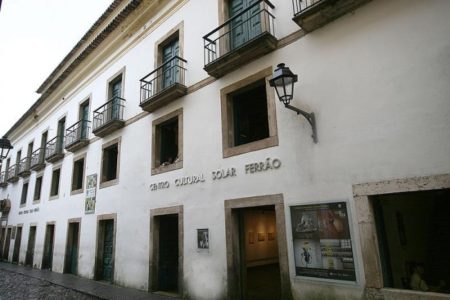
Museu Abelardo Rodrigues
It is a Brazilian museum that occupies the Solar Ferrão, in Pelourinho. The organ is linked to the Institute of Artistic and Cultural Heritage of Bahia (IPAC) and its collection is focused on sacred art produced in Brazil. The Pernambuco collector Abelardo Rodrigues (1908-1971) gathered throughout his life one of the most important collections, composed of more than 800 objects, which reveals the historical and artistic trajectory of Christian sacred art in Brazil, covering the Baroque and Neoclassical, its forms of representation and devotion, bringing the human closer to the sacred.
Gregório de Matos, 45 – Pelourinho, Salvador – BA, 40026-240
Visitation: Tuesday to Friday, from 10 am to 5 pm; Saturday from 1:00 pm to 5:00 pm.
Tel: (71) 3116-6743
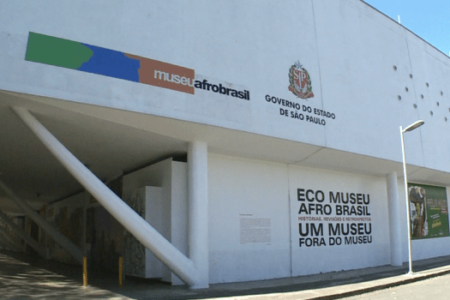
Museu Afro-Brasileiro
It is an institution that proposes to defend, study and publicize everything related to Afro-Brazilian themes. For this purpose, it has a collection of pieces of African origin or inspiration, linked both to work and technology, as well as to art and religions. In this field, there is also room for objects of Brazilian origin, related to the Afro-Brazilian religion of Bahia, including a set of carvings in cedar designed by Carybé, 27 panels representing the orixás of candomblé in Bahia.
das Vassouras, 1-23 – Centro, Salvador – BA, 40020-020
Tel : (71) 3283-5545
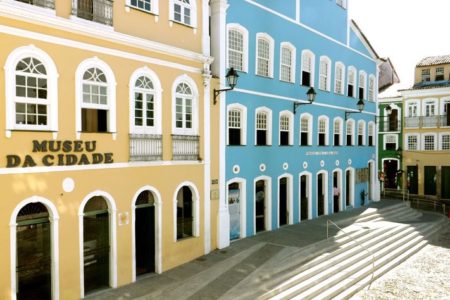
Museu da Cidade
The museum’s collection is very diverse. The exhibitions include religious representations such as the costumes of the Candomblé orixás, a religion that interferes a lot for the city’s culture, as well as belongings of great names of the Bahian cultural scene, such as the poet Castro Alves. The poet stood out in the city for having been one of the first figures to protest against slavery, he is also the author of the famous book O Navio Negreiro. The museum also displays traditional rag dolls that show how colonial life worked, as well as sculptures and pieces of pottery, iron and tapestries. In addition to objects, the museum also houses a wide variety of paintings by Bahian artists, including Mendonça Filho, Caribé, Jenner Augusto and Presciliano Silva.
Largo do Pelourinho, 3 – Pelourinho, Salvador – BA, 40026-280
Tel : (71) 3321-1967
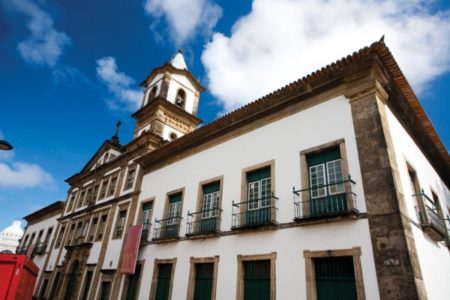
Museu da Misericórdia
This is the Misericórdia Museum, which is among the greatest sources of culture in the city of Salvador. Inaugurated in 2006 by Santa Casa da Bahia, the museum was installed in a 17th century mansion that once housed the city’s first hospital – also founded by Santa Casa. The space has a collection that directly contextualizes the history of Bahia and Brazil.
The collection, composed of more than 3 thousand cataloged pieces, contextualizes a historical narrative of almost 500 years. Highlight for the tiles of 1712 that reproduce the Procession of the Fogaréu, that the Brotherhood of Santa Casa da Bahia held on the night of Holy Thursday, as well as the Pharmacy, cabinet of 1867, exclusively built to store bottles of pharmaceutical substances from the Hospital da Charity. The Misericórdia Museum also has the first gasoline-powered car in Bahia and the oldest on display in Brazil.
The Museum is open from Tuesday to Friday, from 8:30 am to 5:30 pm, on Saturdays, from 9:00 am to 5:00 pm, and Sundays and holidays, from 12:00 pm to 5:00 pm.
tel: 2203-9832.
Endereço: Rua da Misericórdia, nº 6. Praça da Sé.
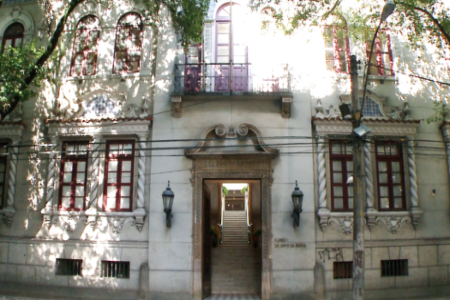
Museu de Arte da Bahia (conhecido pelo acrônimo MAB)
It is installed in the Palácio da Vitória, a neocolonial-style building that served in the past as the headquarters of the Department of Education and Health. The space is endowed with a specialized library, with about 12,000 books, and an auditorium. MAB hosts permanent and temporary exhibitions and organizes multiple cultural activities, such as courses, conference cycles, musical performances and film screenings.
It has a collection consisting of approximately 5,000 works of great historical and artistic value, formed by bringing together several collections organized in Bahia since the mid-19th century, such as those by Jonathas Abbott and de Góis Calmon, both acquired by the Bahia government. The collection includes paintings from the Bahian school and foreign artists, dating from the 16th century onwards, imaginary from the colonial period and a wide range of decorative arts, with Brazilian, European and Oriental pieces. It also has a rich collection of documents, consisting of photographs, maps, correspondence, etc.
Av. Sete de Setembro, 2340 – Corredor da Vitória, Salvador – BA, 40080-004
Tel : (71) 3117-6902
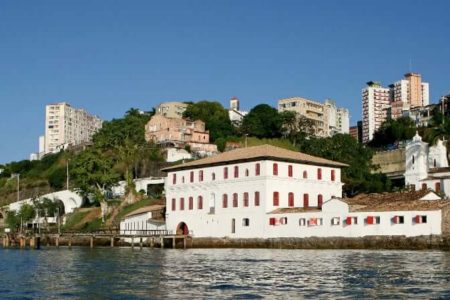
Museu de Arte Moderna da Bahia (MAM-BA)
It is located in Solar do Unhão, a historic site from the 18th century, on the banks of the Todos os Santos Bay.
In terms of structure, MAM-BA has a technical space with conservation, restoration and museology services; eight showrooms; a theater; a library; and an art workshop that offers open courses in painting, engraving techniques, ceramics, drawing, craft paper and sculpture to the entire community.
In its premises you can find paintings, sculptures, photographs and drawings by artists such as Tarsila do Amaral, Portinari, Flávio de Carvalho, Di Cavalcanti, Rubem Valentim, Pancetti, Carybé, Mário Cravo and Sante Scaldaferri.
Tuesday to Friday, from 1:00 pm to 6:00 pm. Saturdays, Sundays, from 2 pm to 6 pm.
Av. Contorno, s/n, Solar do Unhão.
Tel: (71) 3117-6139
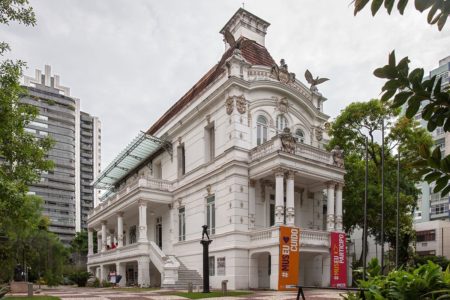
Museu Rodin Bahia (Palacete das Artes Rodin Bahia)
Palacete das Artes Rodin Bahia is installed in the mansion that belonged to Comendador Bernardo Martins Catharino. Historic building dating back to 1912, the building consists of four floors that feature paintings on the walls, ornamental ceilings, stained glass, parquet floors, marble, hydraulic tiles and a French elevator, from the time of its construction, in operation. In addition to the Contemporary Art Room Mário Cravo Jr., which is connected to the Palace through a walkway, which houses short-term exhibitions, the gardens of the Palace are part of the imagination of visitors, with their centuries-old trees and various species of native flora, which house four sculptures, in bronze, by the French sculptor Auguste Rodin, acquired by the Government of the State of Bahia.
Tuesday to Friday, from 1:00 pm to 7:00 pm. Saturdays, Sundays and holidays, from 2 pm to 6 pm.
Rua da Graça, 284, Graça.
Tel: 3117-6987
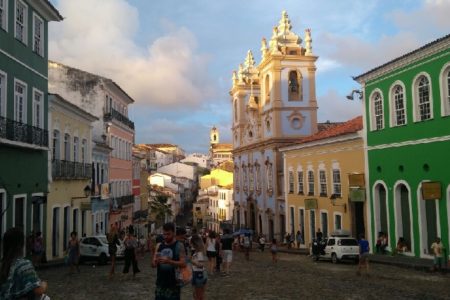
Museu da Gastronomia. Pelourinho
One of the richest cuisines in the world, Bahian food has status as a tourist spot among visitors. Acarajé, abará, coriander and “lambão” sauce are as famous – and “visited” – as the Igreja do Senhor do Bonfim or the Farol da Barra. Our tip here is to know the history of it all. The Museu da Gastronomia Baiana, an initiative of Senac-Bahia, seeks to value the different food systems of Bahia in historical, cultural, social and gastronomic contexts.
Praça José de Alencar, 13/19 – Largo do Pelourinho, Salvador – BA
Opening hours: Monday to Friday, from 9 am to 5:30 pm. Saturdays, from 9am to 3pm.
Tel: +55 71 3324.8118
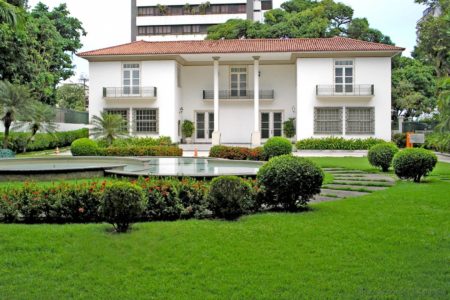
Museu Costa Pinto
Opened in November 1969 on one of the city’s noblest avenues. The museum portrays the life of high society in the 18th and 19th centuries. The site has a private collection of the Costa Pinto family, which gave rise to 23 exhibition rooms of decorative art and of paintings. In the collection, 3,175 pieces are divided into 12 collections. Among them: Crystal, Drawing, Sculpture, Engraving, Furniture, Gold, Painting, Porcelain and Silverware.
Monday to Sunday from 2:30 pm to 7:00 pm, except Tuesday, when it is closed to the public for maintenance and technical work.
Tel: (71) 3336-6081
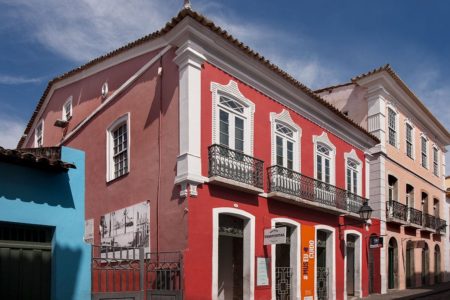
Museu Tempostal
The Tempostal Museum’s collection comprises around 50,000 pieces. They are postcards, photographs and prints from the late 19th and mid-20th century, being one of the most complete collections in the country. They represent images of historical, artistic and documentary value, not only from Bahia and Brazil, but also from several countries in the world, on the most varied themes.
Rua Gregório de Matos, 33 – Pelourinho.
Opening hours: Tuesday to Friday, from 12pm to 6pm. Weekends and holidays, from 12 pm to 5 pm
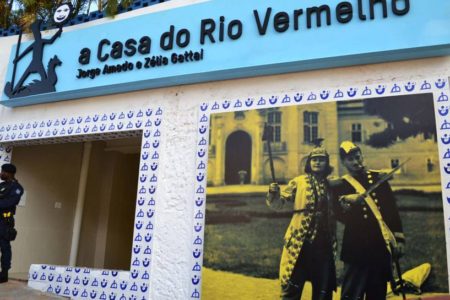
Casa do Rio Vermelho ou Casa de Jorge Amado
Purchased in 1960 with money from the sale of the rights to the book “Gabriela, Cravo e Canela”, by Jorge Amado, to MGM, the house later became the title of Zélia Gattai’s book published in 2002 telling the story lived by the couple when resided in the property. There, writers received distinguished visitors, such as Glauber Rocha, Pablo Neruda, Tom Jobim, Dorival Caymmi, Roman Polanski, Jack Nicholson, Sartre and Simone de Beauvoir, just to name a few.
All this wealth is told in the different environments of the house, with its more than two thousand square meters, including the garden where Jorge and Zélia’s ashes are deposited.
Casa do Rio Vermelho has over 30 hours of videos and projections. In other words, it is impossible to know the entire history of the property and the couple of writers in just one visit. To make the experience of immersing in the intimacy of Jorge Amado and Zélia Gattai more didactic, the house was divided into several thematic spaces, always keeping the original features, the rich collection and important documents, such as letters exchanged with national and international personalities.
From Tuesdays to Sundays from 10:00 am to 4:00 pm (Check in until 3:30 pm)
Attention, not working:
- On mondays
- On the 24th, 25th and 31st of December
- On January 1st
- On February 2nd
- During Carnival.
Rua Alagoinhas, nº 33, Rio Vermelho
http://casadoriovermelho.com.br/

Igreja e Convento de São Francisco (Salvador)/Church and Convent of São Francisco (Salvador)
The Church and Convent of São Francisco are important historical buildings in the city of Salvador.
Located in the heart of the city, the structures were built between the 17th and 18th centuries and are considered one of the most unique and richest expressions of Brazilian Baroque, featuring, in particular, the church, a sumptuous interior decoration. They were listed by Iphan, classified as one of the Seven Wonders of Portuguese Origin in the World, and are part of the Historic Center of Salvador, which today is a World Heritage Site.
Largo do Cruzeiro de São Francisco, S/N – Pelourinho, Salvador – BA, 40020-280
Monday, 9 am to 5:30 pm, Tuesday, 9 am to 4 pm, Wednesday to Saturday, 9 am to 5:30 pm, Sunday, 10 am to 3 pm
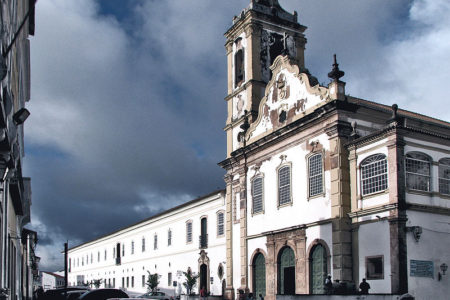
Igreja do Carmo de Salvador
The current structure is basically characterized by elements from the 17th and 18th centuries, was recognized as a material heritage by the National Historical and Artistic Heritage Institute (Iphan), and was last restored in 1909.
Some for the exclusive use of religious, others for public use. The Igreja do Carmo de Salvador is open to the visitation of e tourists. This church is Baroque style with details in Gothic, its beauty is so expressive that tourists and famous people always look for it to celebrate the sacraments of marriages and baptisms, as well as weddings and anniversaries. It is also much sought after by graduates to take pictures in front of them for graduation invitations.
Rua do Carmo, 1 – Santo Antônio Além do Carmo, Salvador – BA
Tel: (71) 3242-0182


